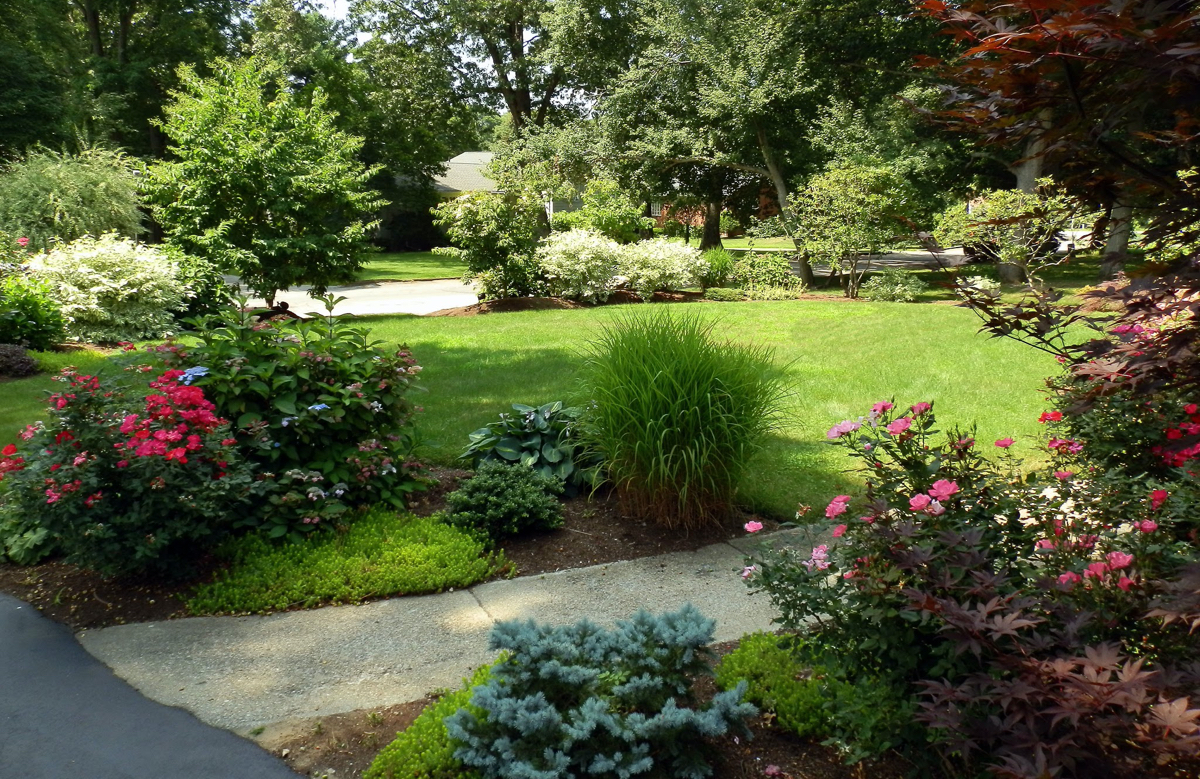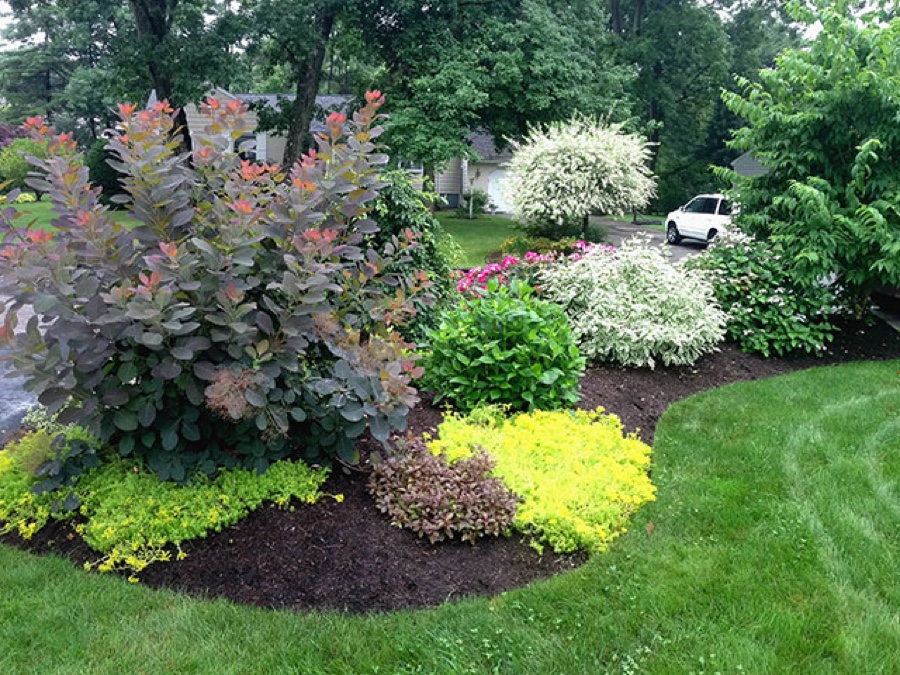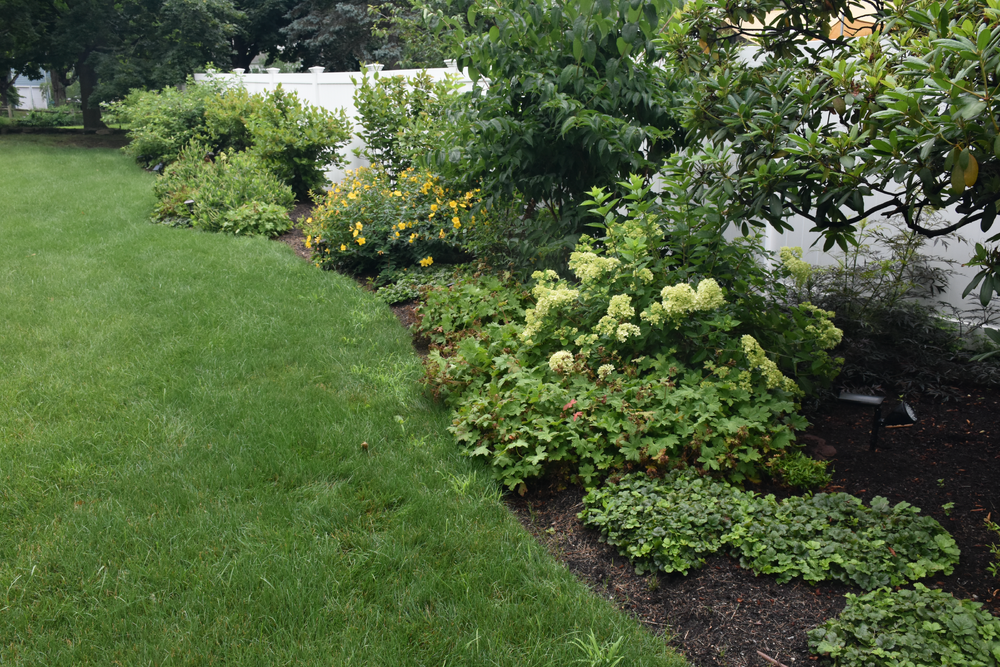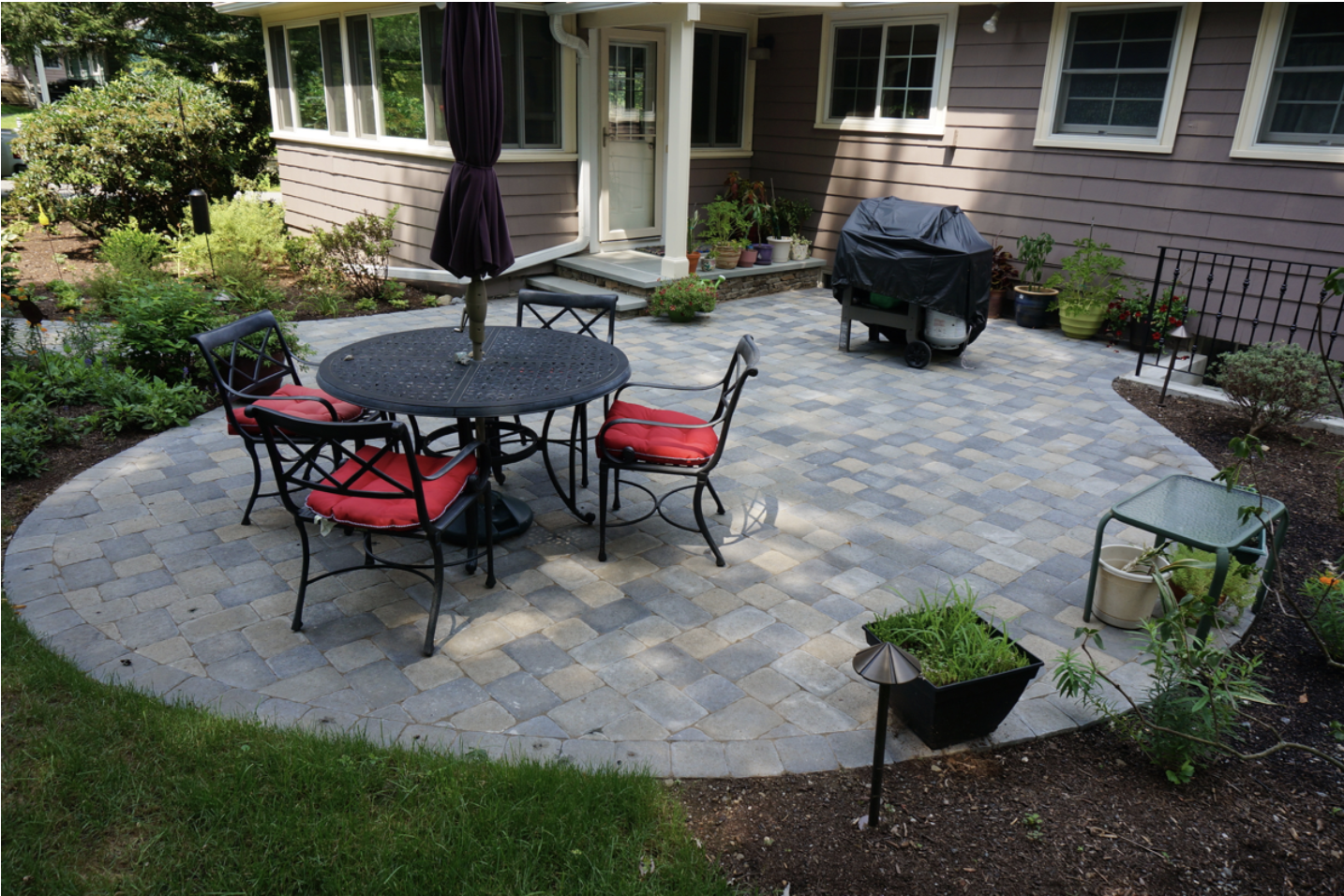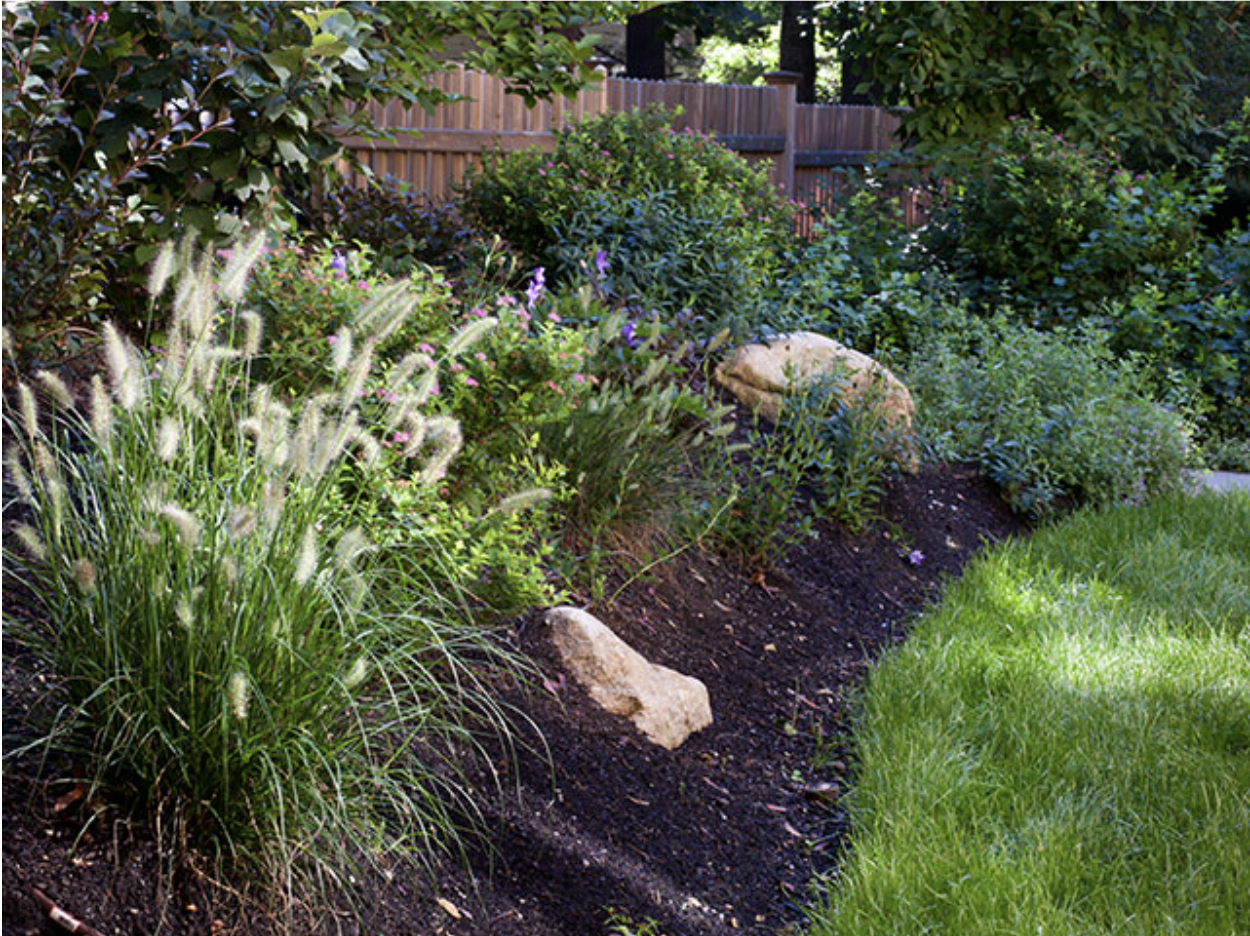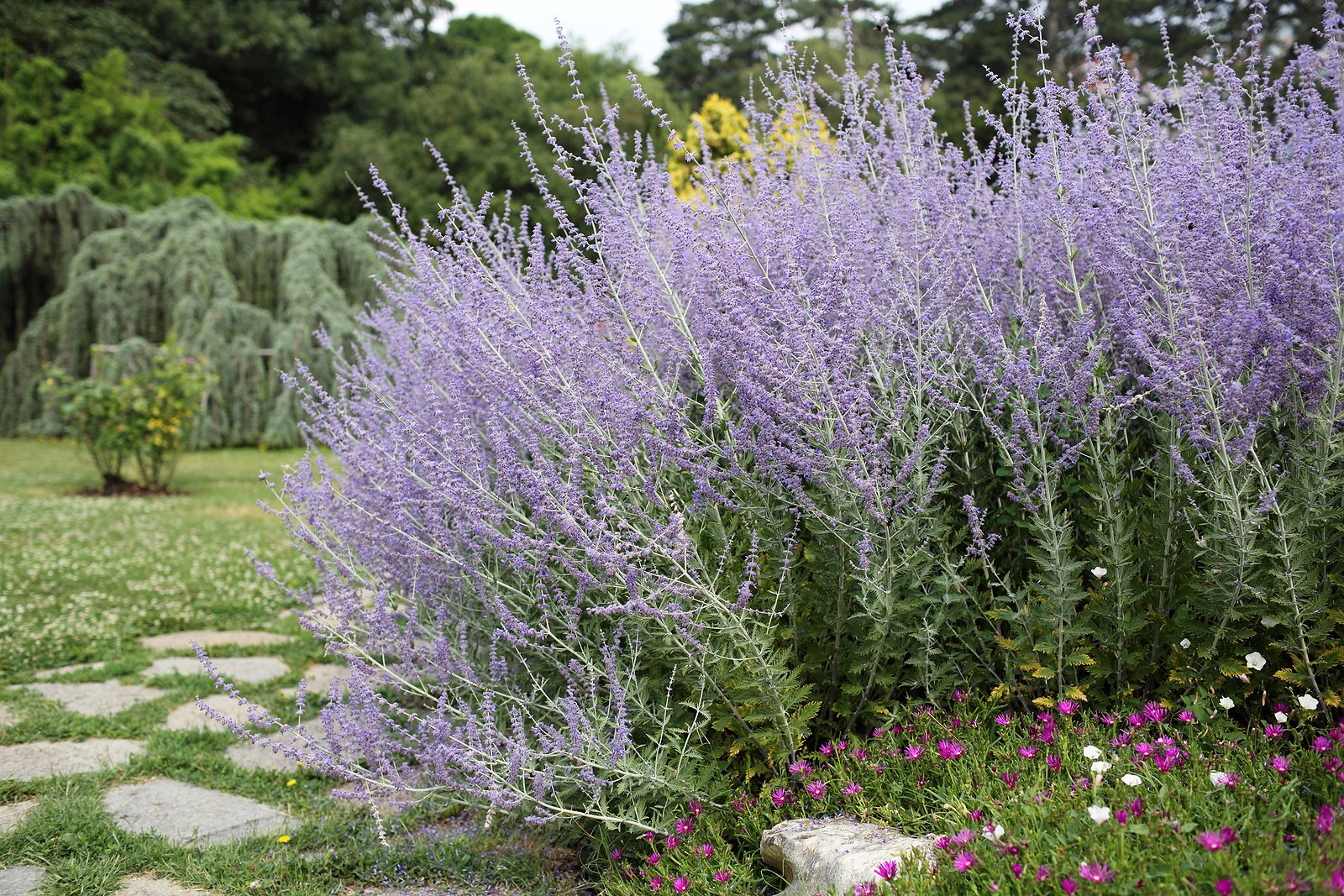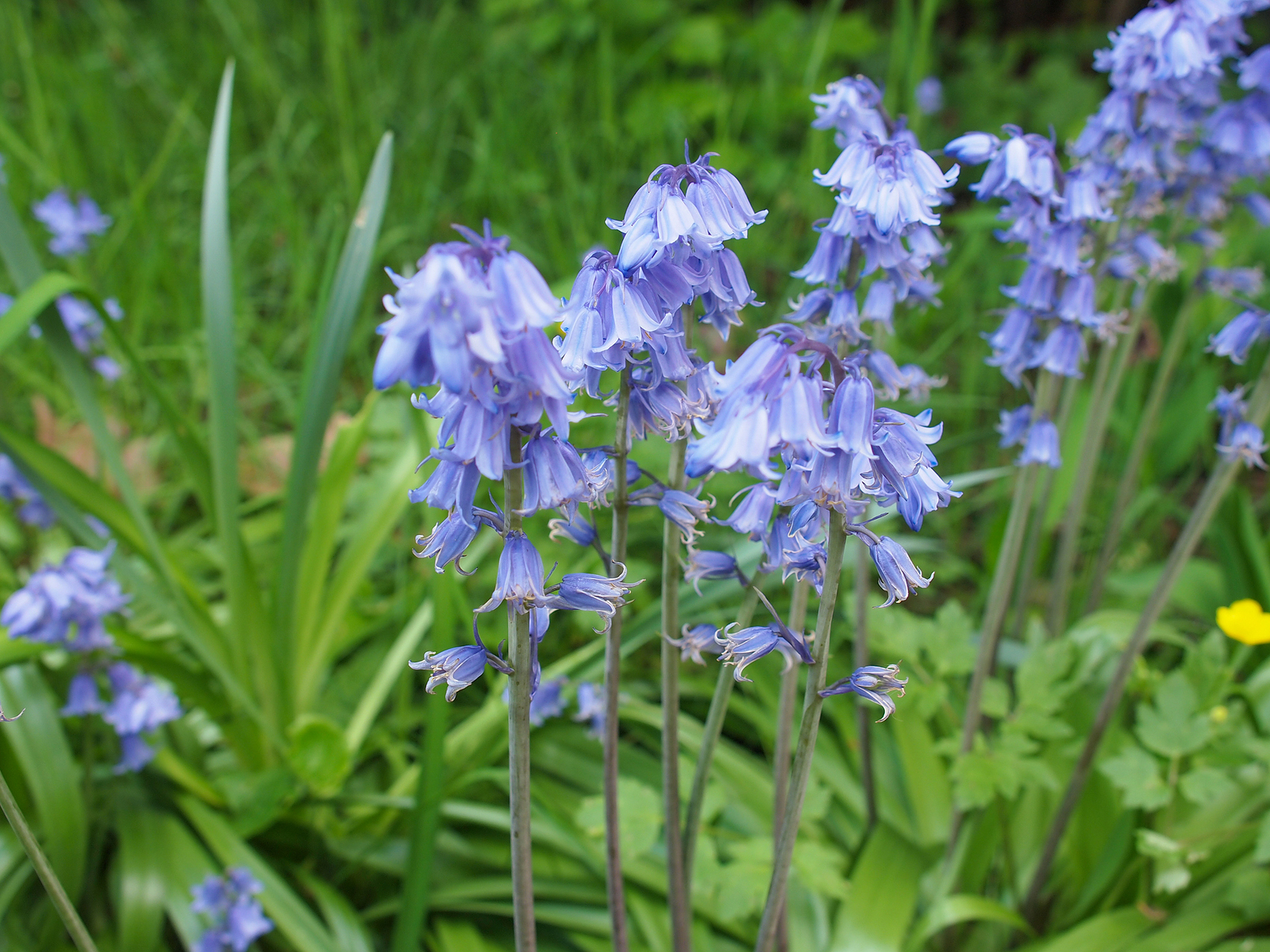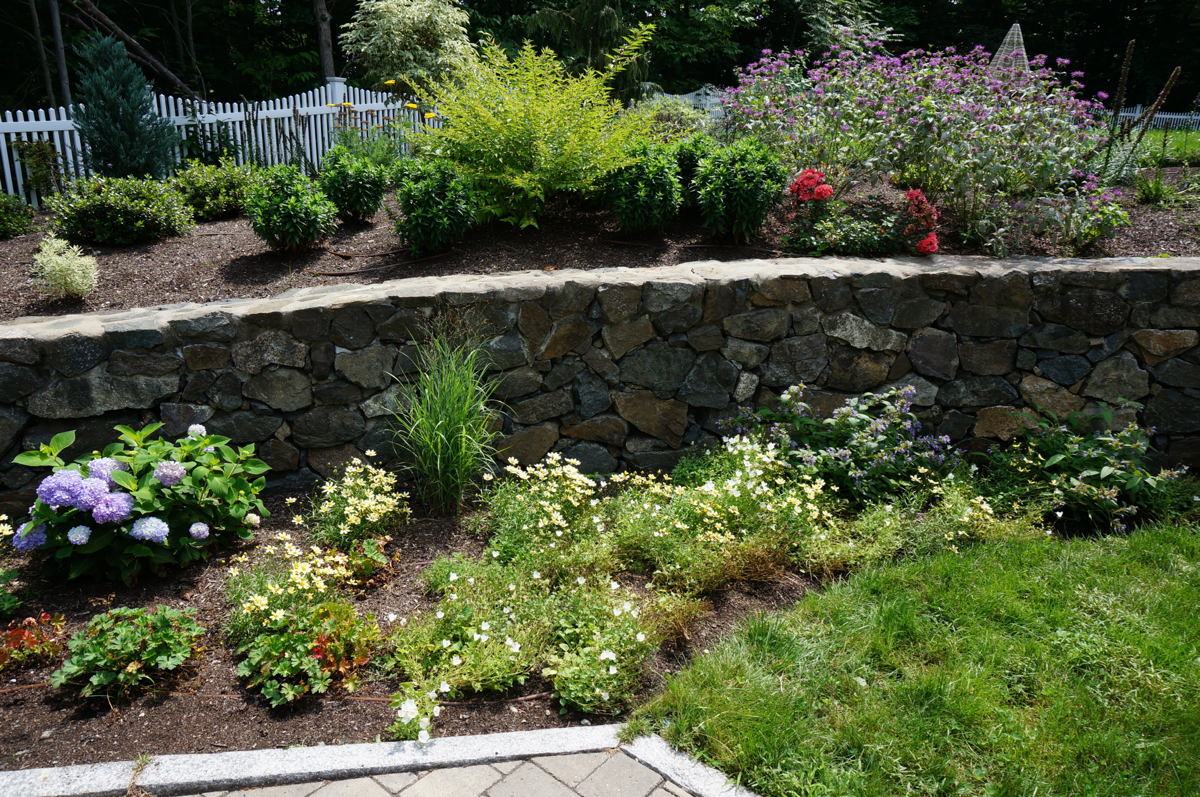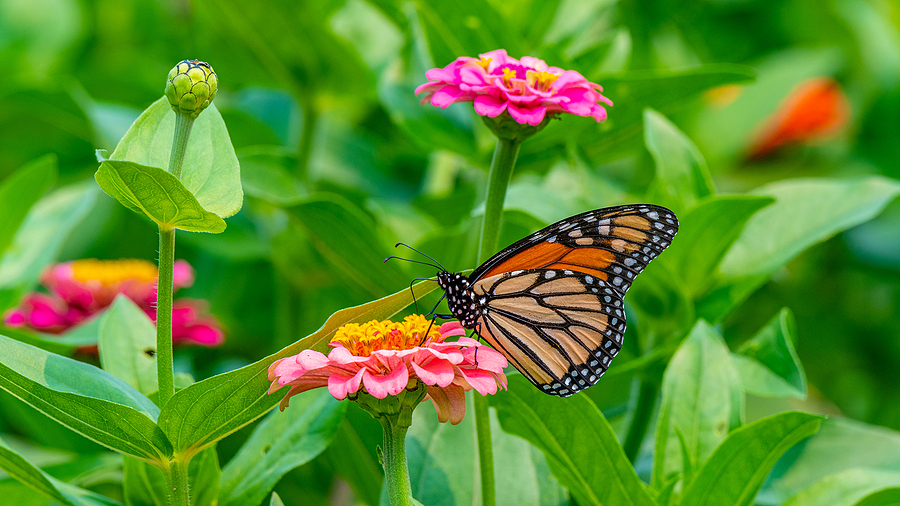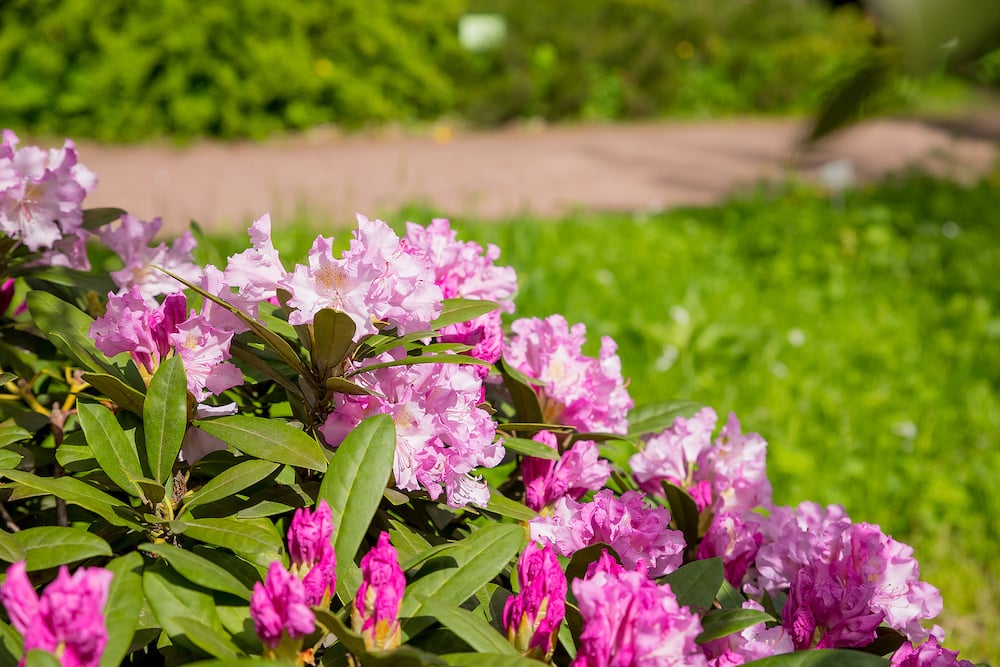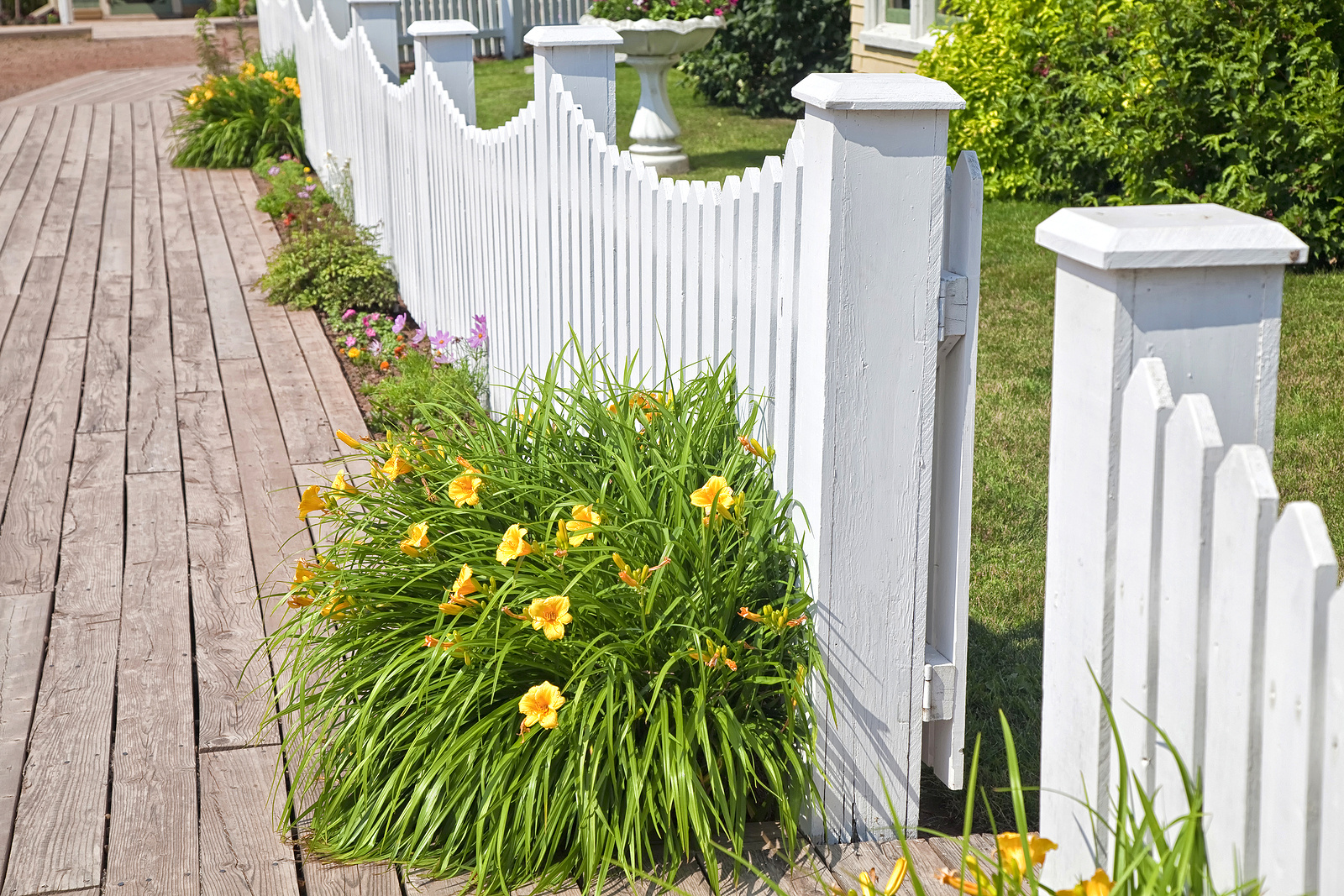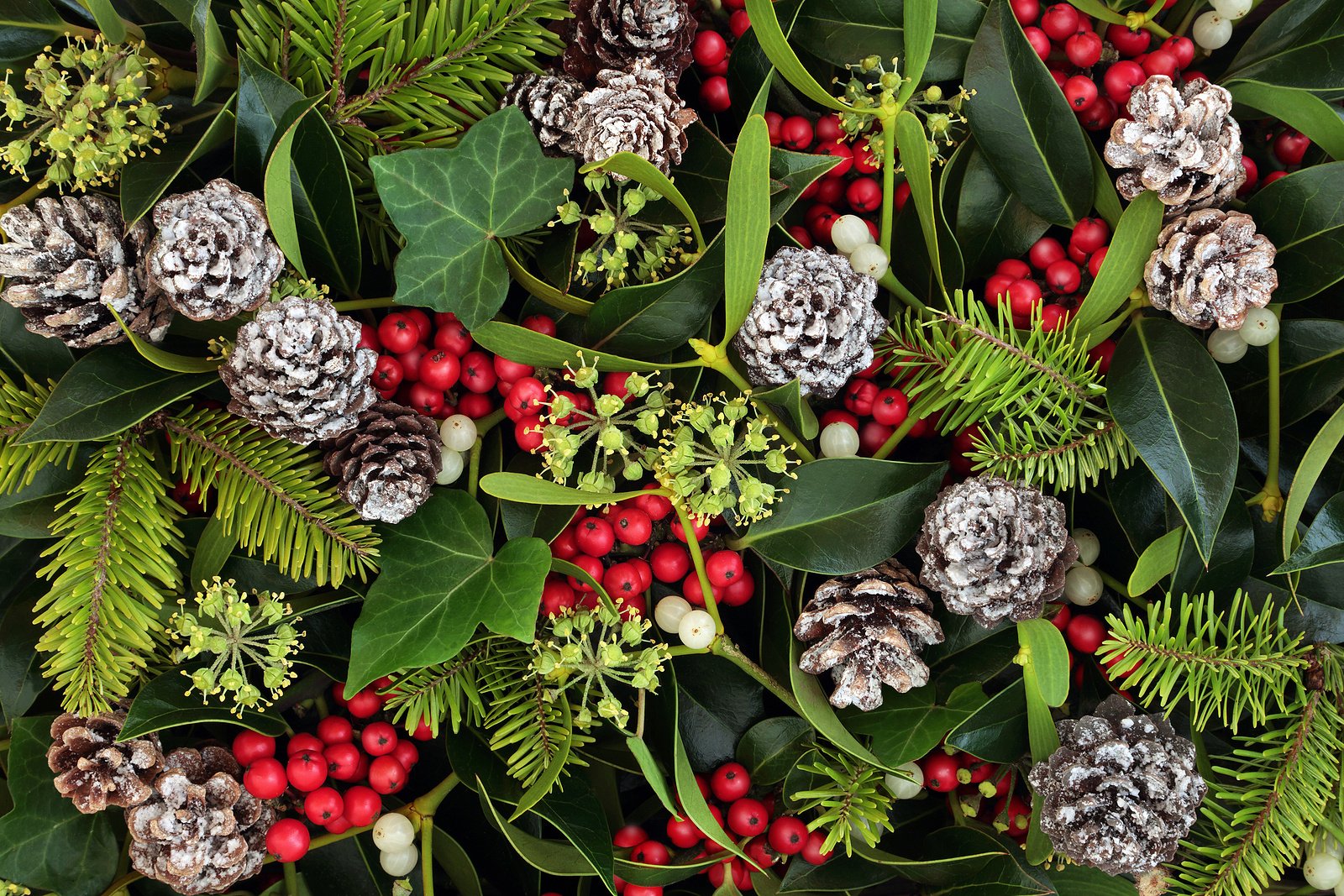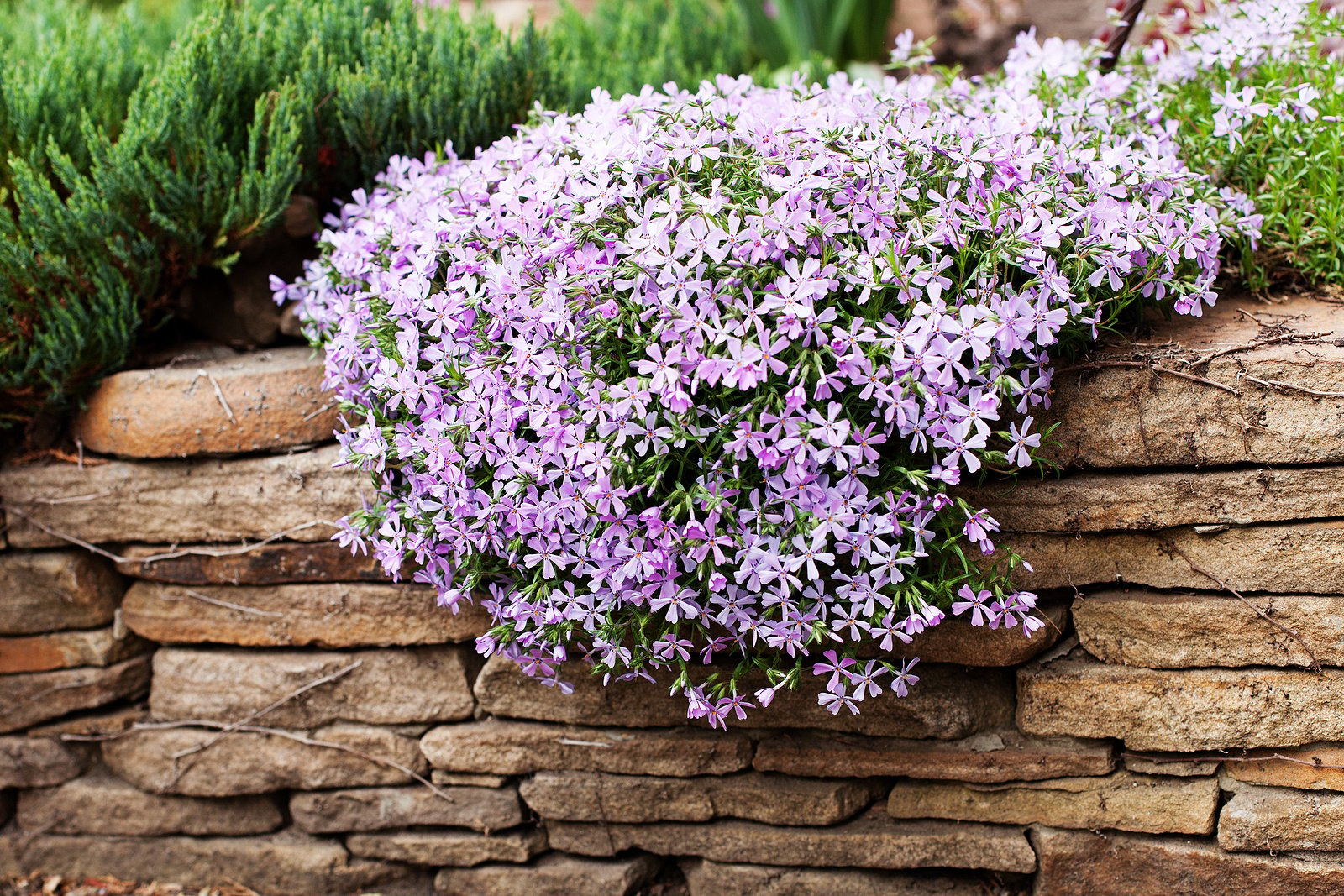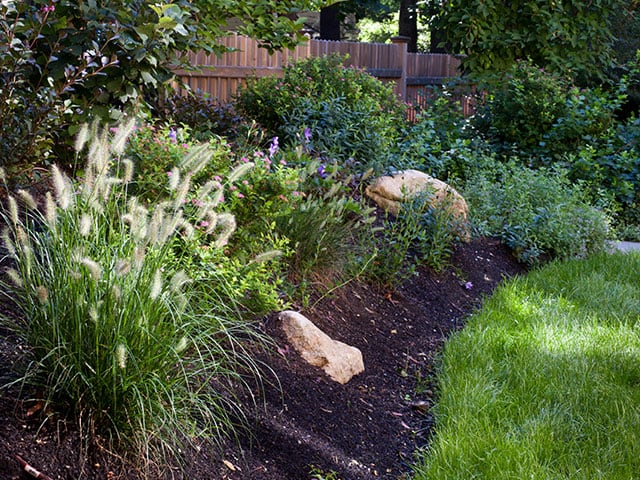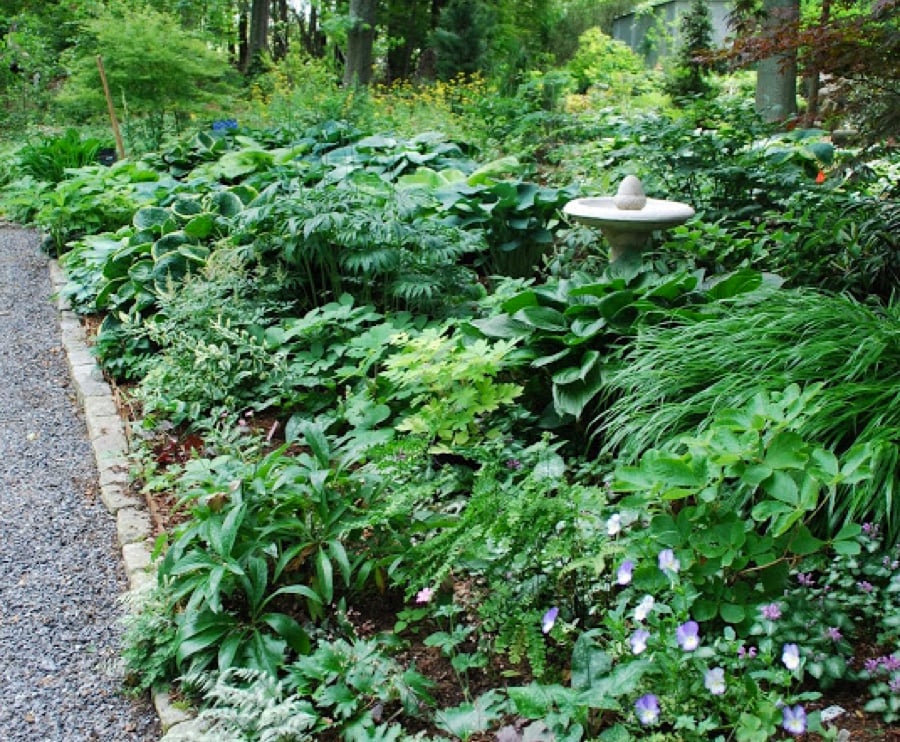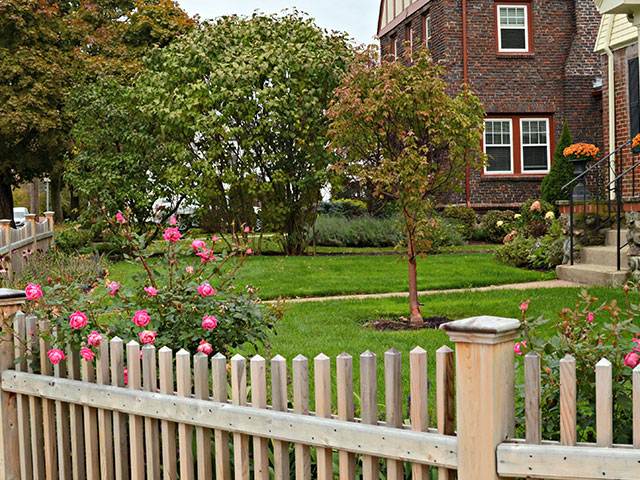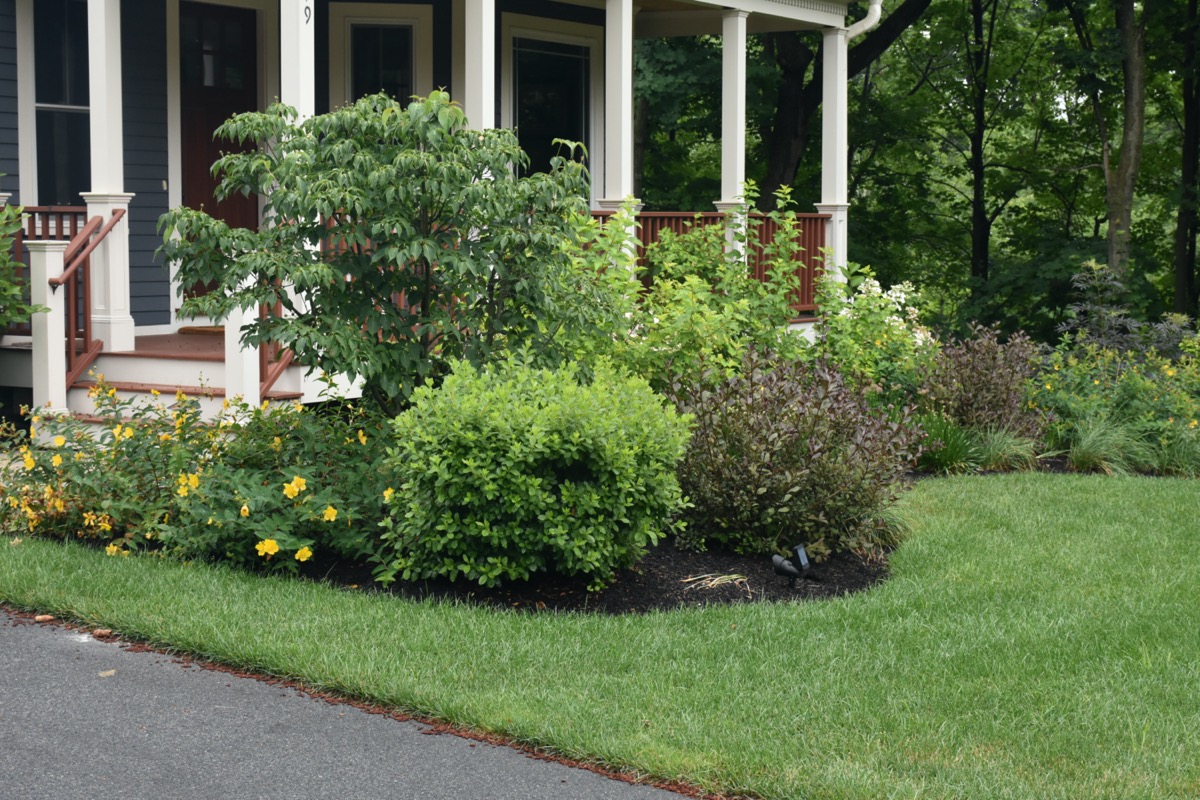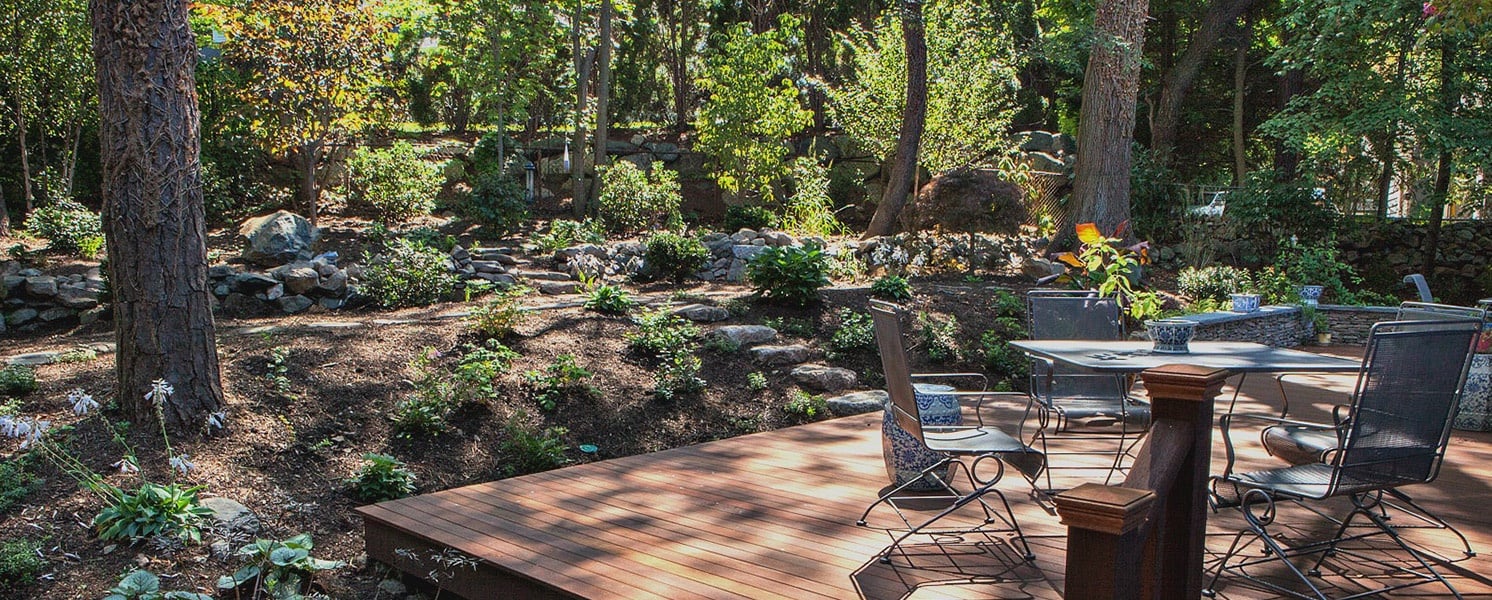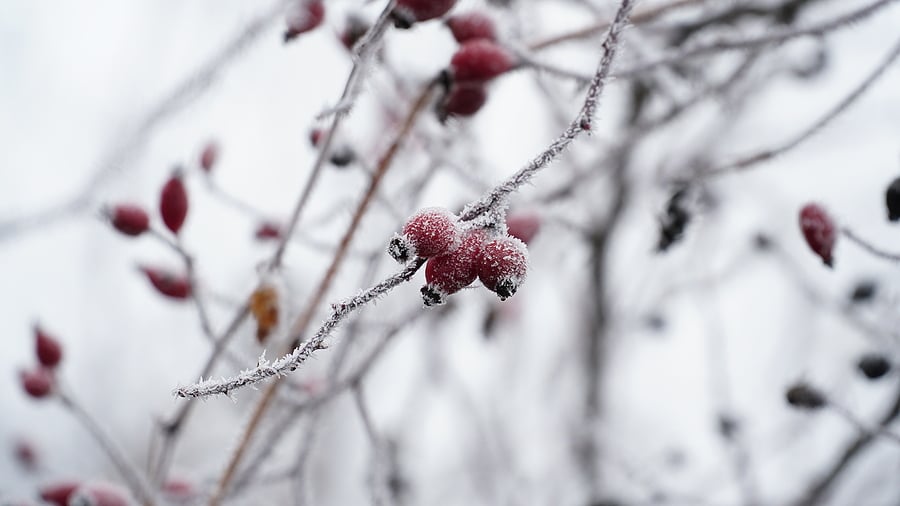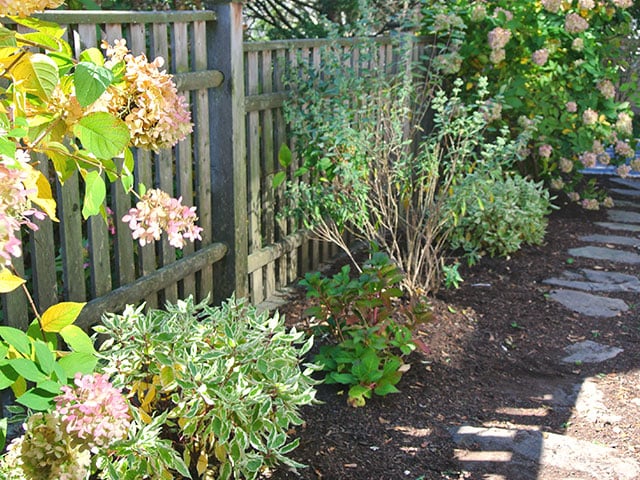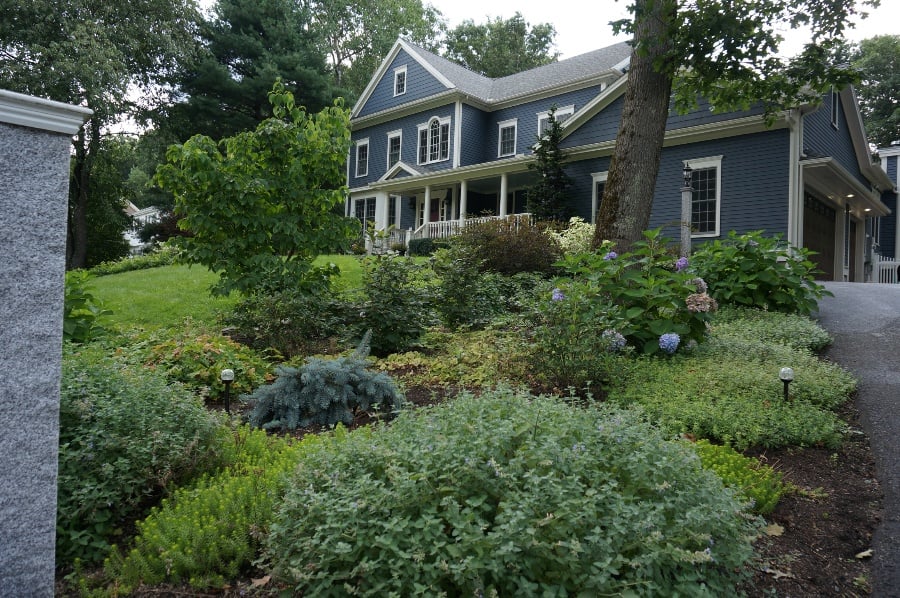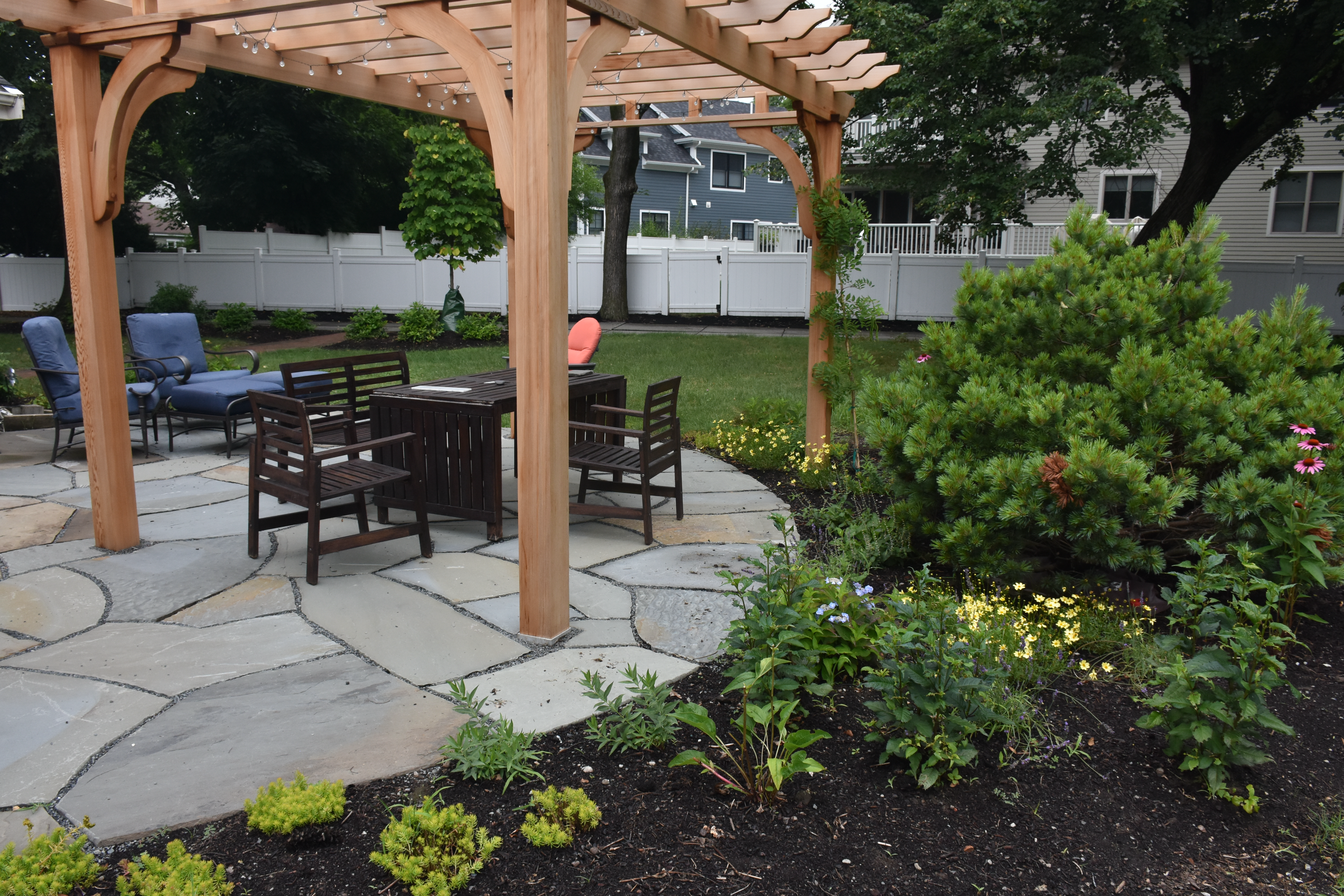When most New England landscapes shut down for the winter, it’s easy to think gray skies and bare branches are unavoidable. But the best landscapes never really go dormant.
They evolve, showing new shapes, textures and colors as the year unfolds. Designing a year-round landscape is less about keeping flowers blooming all year and more about creating an outdoor space that always feels alive.
For homeowners, that means shifting from a one-season mindset to a year-round approach. When you plan for structure, texture and timing, your yard becomes a living space instead of a short-lived summer project. Here’s how to make that happen, step by step.
Step 1: Build the Foundation
Every lasting landscape begins with structure. Evergreens form the framework that holds everything together when blooms fade. Use evergreen shrubs such as boxwood or inkberry for foundation plantings that keep curb appeal strong in winter. Add evergreen trees or tall conifers at the property edges for privacy and year-round height.

Next, think about hardscape. Stone patios, walkways, and retaining walls do more than add visual weight — they connect outdoor living areas and make the yard usable through multiple seasons.
A well-placed path draws you through the space, while a low wall or seating nook defines where to gather. Choose natural materials that complement the tones of your home and nearby plantings.
Step 2: Layer Seasonal Color and Texture
Once the structure is in place, build out your seasonal layers by introducing plants that shift and evolve throughout the year, keeping the garden dynamic and engaging. Use perennials as the foundation for reliable, low-maintenance color. Group them by bloom time so the garden transitions smoothly from spring to fall.
For example, start with spring-blooming bulbs and early perennials that emerge as the snow melts, such as crocus, daffodils and creeping phlox. These flowers help fill borders with early color before trees fully leaf out.

Follow these plants with mid-summer varieties like echinacea, daylilies and black-eyed Susans that add strong color through July and August. These pair well with ornamental grasses or lavender for contrast in texture and height.
To keep energy high, fill containers and open spaces with annuals such as petunias, lantana or impatiens that add vibrant, seasonal color. Because they can be replaced each year, annuals let you refresh the garden’s look without redesigning entire beds.
Annuals work especially well in high-visibility areas like patios, walkways or near entryways. In these areas, the flowers’ bright tones stand out against the steady greens of shrubs and evergreens.

With ornamental grasses, you can create texture and movement that carry the garden through late summer and into winter. Their upright forms provide structure once blooms fade, while their seed heads create subtle contrast against stonework and evergreen plants through fall and winter.
Mixing perennials, annuals and ornamental grasses builds natural rhythm and interest that lasts all year.
Step 3: Plan for Winter Interest
A true year-round landscape has just as much personality in January as in June. When planning, think about how your garden will look once leaves have fallen and color has faded.
Choose deciduous trees with distinctive bark or branching, such as river birch, paperbark maple or Japanese maple, which add shape and texture against a winter sky.
Shrubs like American holly and winterberry bring color and contrast. Their vivid stems and berries stand out against snow and evergreens during the winter months. These choices keep the landscape appealing even when most plants are dormant.

Evergreen shrubs are the backbone of a winter landscape, keeping structure and form when other plants have gone dormant. Boxwood, holly and dwarf spruce hold shape near the house and along garden edges, while larger evergreens like pine or fir define property lines and screen views.
Ornamental grasses such as silvergrass or little bluestem add movement and texture, especially when left standing through winter. Features like a stone bench, birdbath, or simple sculpture create focal points that draw the eye. Low lighting along walkways or around evergreens adds visibility and makes the garden feel cared for all year long.
Step 4: Make It Low Maintenance
A successful landscape design is one that you’ll actually enjoy maintaining. Choose plants suited to your soil, sunlight and drainage so they thrive with minimal intervention. Drought-tolerant and native plants are excellent for reducing water use and supporting local pollinators. Group plants with similar needs together to make irrigation more efficient and pruning more predictable.

Maintenance should follow the natural rhythm of the seasons. Prune evergreens and shrubs in late winter or early spring before new growth appears. Clean up garden beds in the fall, but leave grasses and sturdy seed heads standing for winter texture and wildlife shelter. With smart planning, most of your upkeep becomes simple seasonal care rather than constant work.
Step 5: Bring It All Together
When structure, layering and timing work together, your home’s landscape not only looks beautiful, but functions well in every season.
In the spring, bulbs and early perennials add color, while evergreens provide a clean backdrop. Through the summer, perennials and annuals fill the yard with consistent growth and texture.
By fall, ornamental grasses and foliage create depth and warm color. During the winter, evergreens, hardscaping and lighting maintain shape and interest when most plants are at rest. Each layer has a job, keeping the yard balanced and appealing no matter the time of year.

Designing a year-round landscape is about building something you can enjoy in practical ways — color in spring, shade and outdoor living space in summer, and texture and structure in fall and winter.
With strong structure, thoughtful layering and plants chosen for year-round performance, your landscape can stay attractive, manageable and full of interest through every season.
To learn more about designing a custom landscape for your home, download our free ebook, The Mindful Homeowner's Guide to Transformative Landscape Design. If you're ready to get started on your new landscape project, or simply want to learn more about the process, you can contact our team here to schedule a free consultation. We'd love to talk to you!


